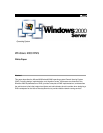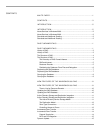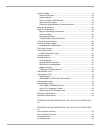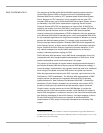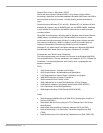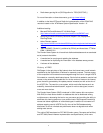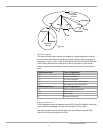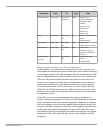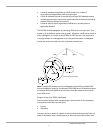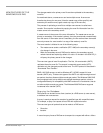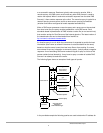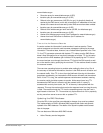
The designers of the Microsoft ® Windows® 2000 operating system chose the
Domain Name System (DNS) as the name service for the operating system.
Windows 2000 Server includes an IETF standard-based Domain Name System
Server. Because it is RFC compliant it is fully compatible with any other RFC
compliant DNS servers. Use of the Windows 2000 Domain Name System server is
not mandatory. Any DNS Server implementation supporting Service Location
Resource Records (SRV RRs, as described in an Internet Draft “A DNS RR for
specifying the location of services (DNS SRV)”) and Dynamic Update (RFC2136) is
sufficient to provide the name service for Windows 2000–based computers
1
.
However, because this implementation of DNS is designed to fully take advantage
of the Windows 2000 Active Directory® service, it is the recommended DNS server
for any networked organization with a significant investment in Windows or extranet
partners with Windows-based systems. For example, while conventional DNS
Servers use single-master replication, Windows 2000 DNS can be integrated into
Active Directory service, so that it uses the Windows 2000 multi-master replication
engine. (Note that the Active Directory supports multi-master replication.) In this
way, network managers can simplify system administration by not having to
maintain a separate replication topology for DNS.
DNS in Windows 2000 provides a unique DNS Server implementation that is fully
interoperable with other standards-based implementations of DNS Server. Some
special interoperability issues are discussed later in this paper.
The purpose of this document is to assist network architects and administrators in
planning the Windows 2000 Active Directory service DNS deployment strategy. It
covers the design, implementation, and migration issues that need to be considered
when rolling out a scalable and robust DNS solution as a global name service.
While this paper assumes familiarity with DNS, it provides a quick overview of the
DNS basics in ”DNS Fundamentals”. The Windows 2000 implementation of DNS
supports various new features (as compared to Windows NT® 4.0 operating
system) described in ”New Features of the Windows 2000 DNS.” It includes the
description of Active Directory integration and incremental zone transfer (IXFR),
dynamic (including secure) update and Unicode character support, enhanced
Domain Locator, caching resolver service and DNS Manager. It provides the
detailed overview of the name resolution process. It also describes the support for
secure DNS management. It includes an overview of the various issues associated
with designing namespace for the Active Directory. It includes integration of Active
Directory with existing DNS structure and migration to the Windows 2000
implementation of DNS, design of the private namespaces and necessary DNS
support.
1
Berkeley Internet Name Domain - BIND 8.1.1 DNS Server implementation supports both SRV RRs and
Dynamic Update, but it dumps core when Windows 2000-based clients send certain updates to it. 8.1.2 is the
first BIND version that works reliably.
Windows 2000 White Paper
1
DNS FUNDAMENTALS



